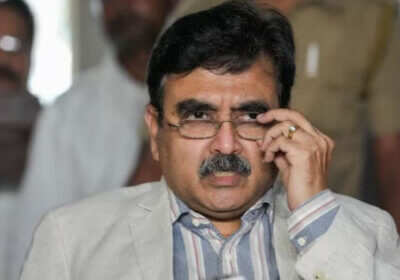The United Progressive Alliance (UPA) is the governing alliance of centre-left parties in India formed on 22 May 2004. It had been in power under the chairmanship of Prime Minister Dr Manmohan Singh until losing the 2014 general election to the National Democratic Alliance, a center-right alliance led by Bharatiya Janata Party. During its five-year rule, the United Progressive Alliance (UPA) government has chalked out a set of programs, measures, and initiatives that can be called its key achievements.
Achievement of the UPA Government
Food Security Act
The UPA government passed the Food Security Act in 2013, which guarantees subsidized food grains to two-thirds of the population. This Act has been hailed as one of the government’s most significant achievements, as it aims to tackle hunger and malnutrition in a country with a large population.
The Food Security Act of 2013 (FSA) is landmark legislation aiming to provide subsidized food grains to about 67% of the rural and 50% of the urban populations. The government has allocated Rs. 1 lakh crore to implement this scheme.
National Food Security Act in 2014 entitles a person to 35 kg of foodgrains per month for Rs 1-3 per kg. The Act also covers distribution through public distribution systems (PDS) and fair-price shops.
UPA Govt Launched MGNREGA
The UPA govt launched MGNREGA, a rural employment guarantee scheme that employed rural households. The program has helped increase overall spending in rural areas and has also led to an increase in farm incomes. In 2009-10, the UPA government had allocated Rs 55,000 crore for MGNREGA; this amount was increased to Rs 60,000 crore in 2010-11 and further increased to Rs 75,000 crore in 2011-12. In 2012-13, the budget allocation for MGNREGA was increased to Rs 80,000 crore.
The program aims to provide 100 days of employment every year to each household whose adult members volunteer to do unskilled manual work such as digging ditches or building roads.
Land Acquisition Bill
The UPA government passed the Land Acquisition Bill in 2013, making it much easier to acquire land for large infrastructure projects. The bill also introduced a new compensation formula and a social impact assessment (SIA) to ensure that those who are displaced by these projects are not left without support.
The passage of this bill was a significant victory for the UPA govt, which had been trying to pass it since 2001. It was especially important because of the failure of previous land reform efforts, including in 2005, when the UPA government’s Land Acquisition Act was struck down by the Supreme Court due to procedural flaws.
Pradhan Mantri Gram Sadak Yojna
The Pradhan Mantri Gram Sadak Yojna is one of the key achievements of the UPA government. Prime Minister Manmohan Singh launched this scheme on September 20, 2005. This scheme aimed to provide all villages with a road connection by 2012. Roads in rural areas were set at 1,00,000 km and for urban areas at 2,00,000 km.
To achieve this target, the government allocated Rs. 60 billion (US$1 billion) in 2006-07 and another Rs. 1,80 billion (US$39 billion) in 2007-08. After that, a total of Rs. 7,650 billion (US$1.5 billion) was allocated to the program from its inception until 2014-15.
Forest Rights Act, 2006
In 2006, the United Progressive Alliance (UPA) government introduced the Forest Rights Act to give tribal groups in India rights over forest land. The law was passed as an amendment to the Indian Forest Act of 1927. It allowed tribal communities to claim ownership of forest land they had been using for generations, even if they did not own it legally. This autonomy was granted by setting up village-level committees to manage and protect these forests.
The Act also established a mechanism for settling compensation claims from tribal communities whose lands had been taken over illegally by state governments or companies for mining and industrial purposes. In addition, it allowed for the formation of Joint Forest Management Committees (JFMCs) to manage forests jointly with local communities.
National Fire Service Act, 2005
One of the key achievements of the UPA government is the National Fire Service Act. It was passed in January 2005 and came into force on 1st April 2006. The Act provides for better fire safety in buildings and other structures and the need to have a fire service in each state and union territory.
It also requires all existing buildings to have fire safety audits done within three years, after which they must be certified as compliant with fire safety standards. Since then, the number of reported fires has decreased by almost half, and there has been a decrease in the number of deaths caused by fires as well.
Right to Education, 2009
The UPA government was able to achieve a lot in its tenure. One of the most notable achievements was the Right to Education Act, 2009. This Act ensured that all children between 6 and 14 years of age had the right to free and compulsory education. It also guaranteed special protections for girl students, disabled children, and those from economically disadvantaged backgrounds.
The Act also made it mandatory for states to set up district education officers (DEOs), who were responsible for monitoring schools and ensuring compliance with all regulations related to education. The Right to Education Act has been hailed as one of the most progressive pieces of legislation in India’s history, with experts noting that it could help improve the country’s literacy rate by up to 25%.

Key Achievements of UPA Government























Leave a Reply